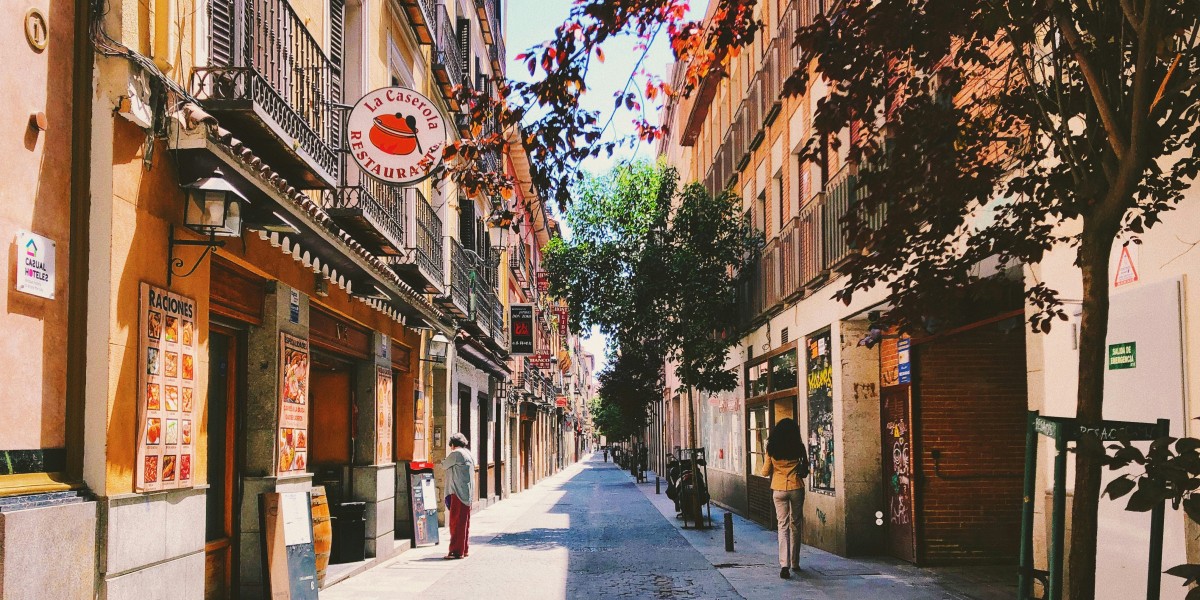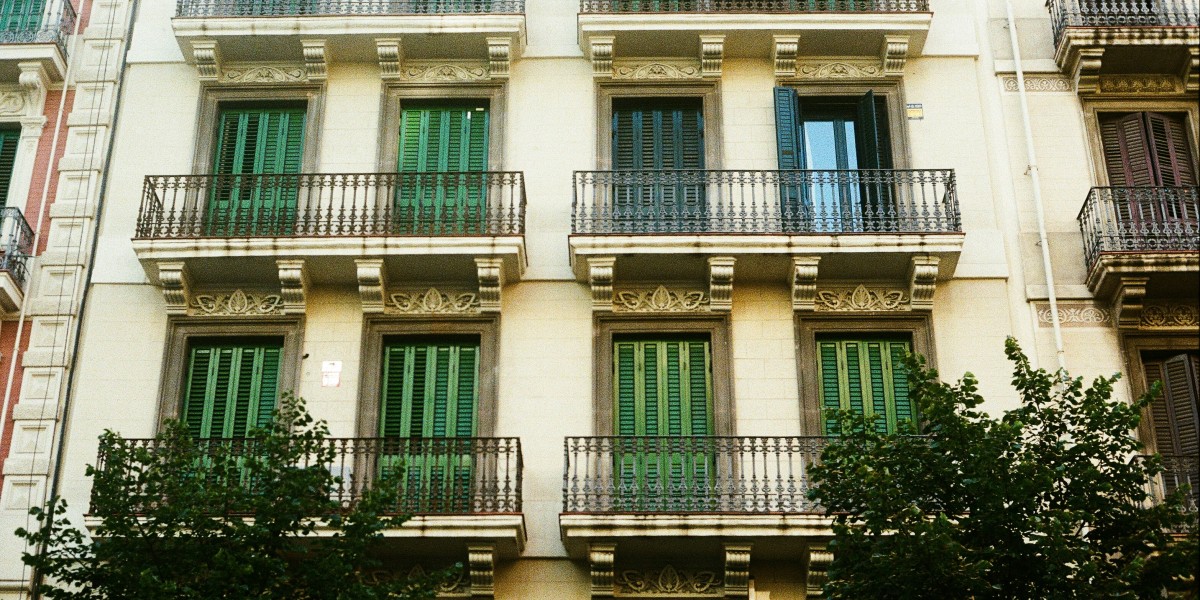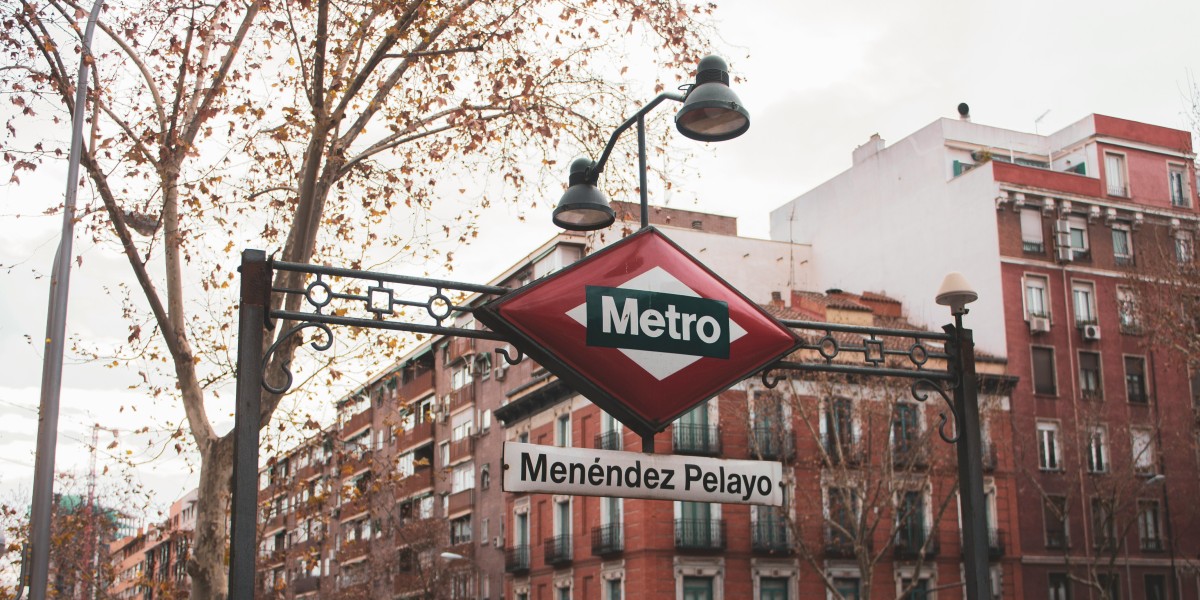
Opting for a room in a shared apartment goes miles beyond saving money by splitting rent and bills. With the rising rental prices in Madrid, coliving is part housing solution, part social adventure—an experience as unpredictable as the city itself. You’ll cross paths with people you might never otherwise meet—future best mates, language partners, or even just expert locals who know the best menú del día spots.
Every flatshare is its own microcosm of cultures, routines, and Madrid life. For remote workers, there’s also the extra bonus of ready-made company and the chance to network without (always) having to sit in a café. Students enjoy living in a shared apartment over student accommodation as it gives them more freedom.
- Room rent and typical costs in Madrid
- Best neighbourhoods for renting a room in Madrid
- Where to find a cheap room for rent in Madrid
- What to expect when renting a room in Madrid
- Renting a room in Madrid for a month
- Renting a room in Madrid as an expat or student
- Renting a room with idealista's online booking
Room rent and typical costs in Madrid

Renting a room in Madrid is hands down the most cost-efficient and flexible way to live in the city. In fact, more than 60% of the supply of rooms for rent in Spain is in Madrid, Barcelona and Valencia.
Instead of getting locked into hefty leases or forking out for a whole flat, flatsharing means you can keep your monthly outgoings way lower. You can find a cheap studio for rent in Madrid, but you'll still be paying considerably more at the end of each month, as the rent with bills on top can mount up.
How much is a room for rent in Madrid?
At the start of 2025, the average rent for a private room in Madrid hovers around €500 per month. In central districts or newly renovated flats, you might see prices ticking higher, while rooms further out or in less in-demand areas can drop to €400 or even lower. Studios for rent in Madrid come in steeper, at least €800 per month, while a whole apartment will easily set you back €1,500 monthly.
Factors that affect rent in Madrid
- Neighbourhood: trendy or central areas like Malasaña and Chueca cost more, while outlying districts like Carabanchel or Vallecas are usually cheaper.
- Room size & furnishing: larger rooms, private bathrooms, or fully furnished setups push the rent up.
- Bills included: rooms that cover all utilities (heating, Wi-Fi, electricity) in the price are often slightly more expensive up front, but mean fewer hidden costs.
- Flat condition & age: recently renovated or modern buildings usually ask a premium versus older or less updated properties.
- Length of stay: short-term lets, like renting a room for a month, are usually pricier per month than longer contracts.
Best neighbourhoods for renting a room in Madrid

Madrid’s neighbourhoods are wonderfully diverse, offering options for every budget and vibe. As of 2025, the rental market is still going strong, so picking the right barrio is about balancing cost, convenience, and character.
Salamanca
Known as one of Madrid’s most upscale areas, Salamanca is the priciest neighbourhood in the city. Rental prices for apartments average around €26.3 per m². It’s the land of designer boutiques, stylish cafes, and beautifully kept streets.
Malasaña
A favourite for students, creatives, and anyone after edgy nightlife, Malasaña is packed with indie bars, vintage shops, and street art. It sits close to the city centre and is ideal if you want to be part of Madrid’s youthful energy, though prices are on the higher side compared to the outskirts.
Chueca
Madrid’s LGBTQ+ heart, Chueca is a central hotspot bustling with modern bars, cool eateries, and year-round events. Rooms move quickly here thanks to the buzz and the brilliant central location.
Lavapiés
Lavapiés is one of Madrid’s most multicultural neighbourhoods. Cheap eateries, art spaces, and a good mix of locals and internationals make it especially popular with students, artists, and remote workers. Rents tend to be more affordable than neighbouring Malasaña or Chueca, and the atmosphere is laid-back and inclusive.
Chamberí
A leafy, relaxed neighbourhood that mixes classic Madrid charm with a local, lived-in feel. It’s a bit quieter, but still within a brisk walk of most happening spots and attracts plenty of young professionals.
La Latina
This historic area is beloved for its tapas routes and laid-back vibe. Cheaper than the likes of Salamanca, it offers characterful flats and plenty of evening atmosphere, especially at weekends.
Moncloa and Argüelles
Close to major universities, these areas are always student-friendly and packed with affordable room options. Expect a sociable, youthful community and easy access to transport and green spaces.
Where to find a cheap room for rent in Madrid

Finding cheap rooms in Madrid isn’t just about luck—it’s about knowing where to look. The city’s more affordable neighbourhoods are typically found on the outskirts or in spots that have dodged the hype but still offer good connections to the centre.
Vicálvaro
If you’re looking to save, Vicálvaro out east is currently the cheapest district in Madrid for renting, with apartment rents averaging just €14.6 per m². It’s a more residential, local-feeling area, a little further from the centre, but a great shout if you’re watching your budget.
Vallecas
Consistently a top pick for young people, Vallecas (both Puente de Vallecas and Villa de Vallecas) is known for its community spirit, lively local traditions, and, best of all, its affordable rents. The area is well connected by metro and cercanías trains, and you’ll regularly find rooms at prices lower than those in Madrid’s trendier barrios.
San Blas–Canillejas
If you want another affordable spot that’s particularly popular among young renters, look at San Blas–Canillejas. Located to the northeast, this district remains budget-friendly with plenty of room offers, solid amenities, and easy metro access to Madrid’s core sights. It’s also close to some big business parks and sports venues, which means a good mix of students and young professionals.
What to expect when renting a room in Madrid

Renting a room in Madrid is usually a straightforward process, but it does come with its own quirks and conventions. Most flatshares are managed either directly by private landlords, through agencies, or on large platforms. It’s a popular living option, so places can go quickly—having your documents ready and knowing what’s standard (and not) helps avoid surprises. Renting a room in bigger cities also comes with its
The renting process explained
- Contacting landlords/agencies:
Once you've found a room you like, remember, quick responses help, as rooms can get snapped up fast. - Typical documents required:
Expect to be asked for ID (passport or DNI/NIE), proof of income or a work contract, and sometimes a bank statement or university acceptance if you’re a student. Guarantors may be requested if you don’t have a steady income. - How contracts work:
Most rentals require you to sign a contract—standard terms are 6 to 12 months, though some landlords offer shorter stays for students or digital nomads. Be sure to check if the agreement is in Spanish and ask for a translation if you’re not confident. A deposit of 1-2 months' rent is standard, often protected under law. For Erasmus or exchange students, flexible terms can sometimes be negotiated. - Move-in timelines and viewings:
Viewings could be virtual or in person; some agencies and landlords move quickly once you say yes. Be wary if you’re asked to pay a deposit before an official contract is signed or before seeing the room, as this is a common scam risk.
What’s included: contracts and bills
- Bills included:
Many rooms advertise “bills included”—meaning rent covers electricity, water, gas, Wi-Fi, and sometimes cleaning. Always double-check what’s actually included, as heating or air-conditioning may carry extra charges and shared costs for communal areas sometimes pop up unexpectedly. - Shared amenities:
Standard shared amenities in Madrid flatshares: fully-equipped kitchen, living/dining room, washing machine, and sometimes a cleaner for common spaces. Newer or more upmarket flats might offer en-suite bathrooms or extras like dishwashers and balconies.
Renting a room in Madrid for a month

If you’re just starting out in Madrid, testing the waters before a longer commitment, or simply want to get to know a neighbourhood before settling in, renting a room for a month is a smart way to stay flexible. Month-to-month rentals are especially handy for newcomers, Erasmus students, or remote workers who want a bit of freedom without locking themselves into a year-long contract.
When searching on idealista, each room listing has a ‘looking for’ section right at the bottom where you’ll find the 'minimum stay' and the 'maximum stay' for that specific room. This is key—many landlords set a minimum rental period, and if you’re hoping to stay for just a month, you need to keep an eye out for places that allow short-term lets.
On listings in Madrid that support instant online booking, there’s the ‘Book the room’ calendar on the right-hand side. You can enter your desired check-in and check-out dates for a month, and the system will only let you book periods that fit within the landlord’s minimum stay requirement.
Renting a room in Madrid as an expat or student

Settling into Madrid as an expat or student comes with a bit of a learning curve, but renting a room is one of the easiest ways to integrate into city life.
- Navigating language and cultural differences:
English is widely spoken among younger Madrileños, students, and fellow expats, but you’ll stand out (in a good way) by trying a bit of Spanish. Spanish shared flats can be social—expect group chats, shared grocery runs, and maybe a communal meal now and then. - Finding compatible housemates:
Decide if you’d prefer an international flatshare, where English is usually the common language, or one with mostly Spanish speakers, which is brilliant for language practice. If you want an inclusive environment, click the LGBTQ+ filter when searching for a room in Madrid. And if you're really not into smoking, opt for a non-smoking household. - How visa or residency status affects renting:
As an international, landlords might ask for proof of visa or student status. Students can usually get by with a university admission letter, while non-EU expats may be asked for a NIE (foreigner’s ID) or proof of residency application. - Integrating socially & feeling at home:
The beauty of renting a room is the chance for instant community. Jump into shared activities (weekly dinners, language exchanges, or local events). Apps like Meetup or the classic Erasmus events scene can quickly expand your social circle.
Renting a room with idealista's online booking

If you’re abroad or juggling a tight arrival window, online booking is a lifesaver. On idealista, loads of rooms now offer instant booking, meaning you can view photos, message the landlord or agency, and even secure your spot without ever setting foot in Madrid. Just look for listings with the online booking option and use the calendar to check if your preferred dates (and minimum stay) fit. For extra peace of mind, you can also opt for online booking with insurance, which covers potential damages or issues during your stay. The platform handles secure payments and paperwork, letting you arrive with peace of mind, knowing your new room (and usually housemates) are sorted before you even land in Barajas.
